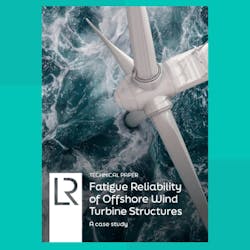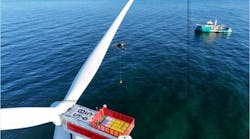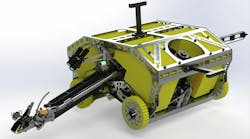Report questions fatigue life of wind turbine support structures, advocates rethink on inspections
Lloyd’s Register (LR) has warned in a new report that certain offshore wind turbine support structures may not meet required fatigue life expectations.
A case study evaluated an offshore wind farm in the North Atlantic comprising 60 to 70 turbines (500-600 MW capacity).
According to LR, offshore wind turbines are typically designed for 25 years of service, based on a fatigue design factor of three—this implies a minimum required fatigue life of 75 years.
The study, however, determined that a critical joint in the jacket foundation would reach the end of its fatigue life after only 52 years.
Rather than focus on redesigning the joint, the study team adopted a reliability-based inspection approach to identify and mitigate potential failure via targeted, risk-based maintenance.
They combined a S-N (stress versus number of cycles) model to estimate when structural safety might fall below acceptable thresholds, with a fracture mechanics (FM) crack growth analysis, to predict the probability of failure over time and inform inspection intervals.
This approach involves use of inspection results via probability of detection curves to enable inspection schedules to be updated, in order to relate to real-world conditions and inspection results.
The study concluded that a first inspection should be conducted around year nine, followed perhaps by further inspections annually to maintain acceptable safety margins.
But the report also highlights the limitations of inspection methods, with visual and ultrasonic inspections found to be less effective for fatigue-critical components. While techniques such as Eddy Current or ACFM can provide greater reliability and allow for longer inspection intervals, this is only the case when operators are willing to approve slightly lower safety thresholds.
Reliability-based inspection planning does help reduce in-service life costs and ensure longevity and safety of offshore wind turbine structures, but it requires specialist input, LR said, along with reliable models and software tools capable of complex calculations.
Research is taking place to refine the models and address issues during their application. Reliability updating, LR added, can involve complex modeling and precise calibration of parameters such as initial crack size and stress intensity factors, both areas that are often underdeveloped in practice.
Finally, the report calls for broader industry collaboration to improve inspection standards, share real-time monitoring data to refine fatigue predictions, and also more flexible definitions of acceptable reliability where appropriate.





